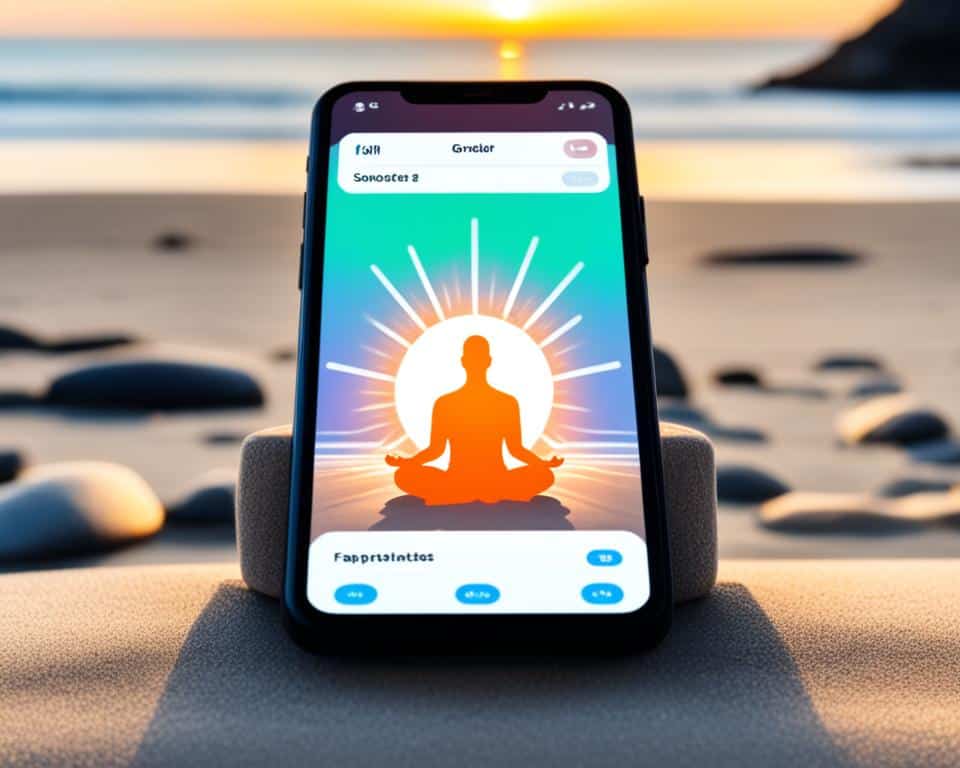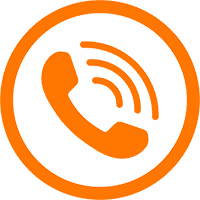Meditation apps have become key tools for those looking for peace, mindfulness, and better health. Apps like Calm and Headspace show how big this market is. They inspire people to make their own successful meditation apps.
This guide will show you how to make a meditation app as good as Calm and Headspace. We’ll cover everything from understanding the market and what makes your app stand out to adding important features and making the user experience great. By the end, you’ll know how to turn your meditation app idea into reality.
Table of Contents
Key Takeaways
- Understand the meditation app market and the success factors of leading apps like Calm and Headspace.
- Identify unique features and design elements that can differentiate your meditation app from the competition.
- Explore the development process, including requirement analysis, design, backend and frontend implementation, and testing.
- Prioritize user experience and integrate mindfulness techniques to create an engaging and effective app.
- Develop a comprehensive monetization strategy to ensure the long-term sustainability of your meditation app.
Introduction to Meditation Apps
In today’s fast-paced world, meditation apps have become very popular. They help people find calm and clarity. These apps have changed how we practice mindfulness and take care of ourselves. They offer many benefits and a wide range of options for those wanting to meditate daily.
Benefits of Meditation Apps
Meditation apps bring many benefits for our mental and physical health. They offer guided meditations, personalized programs, and ways to track progress. This makes meditation easy and accessible for everyone. The main benefits include:
- Reduced stress and anxiety
- Improved focus and concentration
- Enhanced sleep quality
- Increased emotional regulation and resilience
- Greater sense of overall well-being
Popular Meditation Apps on the Market
The market for meditation apps has grown a lot, offering many choices for different needs and tastes. Some top apps include:
| App | Key Features | Unique Selling Point |
|---|---|---|
| Calm | – Guided meditations – Sleep stories – Mindfulness exercises |
Extensive library of content and personalized recommendations |
| Headspace | – Meditation courses – Mindfulness exercises – Sleep-focused content |
Expertly-designed programs tailored to user needs |
| Insight Timer | – Guided meditations – Timer for self-directed practice – Meditation community |
Vast library of free meditations and diverse content |

These leading meditation apps, among others, are key for those wanting to add mindfulness and relaxation to their day. They offer a lot of content, personalized features, and a supportive community. This makes meditation’s benefits easy to get into.
Understanding the Calm and Headspace Success
The success of Calm and Headspace comes from focusing on what users need and smart marketing. These apps are top health and fitness apps because they put users first and offer great content.
Calm and Headspace stand out by making meditation personal for everyone. They have many guided meditations, sleep stories, and exercises for different needs. This makes users stick with it and enjoy the mindfulness benefits.
| Factors for Calm App Success | Factors for Headspace App Success |
|---|---|
|
|
Calm and Headspace work with top meditation experts and teachers. They offer a wide range of quality audio sessions. This focus on quality builds trust with users and keeps them coming back.
“The key to Calm and Headspace’s success is their ability to make meditation accessible and enjoyable for users of all levels, from beginners to experienced practitioners.”
Marketing and branding are big reasons for their success. Calm and Headspace use digital marketing and social media to reach more people. Their unique brands and stories connect well with their audience, helping them grow.

Calm and Headspace show how much people want easy-to-use meditation tools. By focusing on users and quality content, they’ve become top choices for improving mental health and mindfulness.
Key Features of Meditation Apps
Creating a successful meditation app means adding key features that meet user needs and likes. Important features include guided meditation sessions and personalized recommendations.
Guided Meditation Sessions
Guided meditation sessions are a must-have for a meditation app. They should be led by skilled instructors and include various techniques like mindfulness and visualization. The app should have a big selection of meditations for all levels of experience.
Adding guided meditation sessions helps users stick with meditation and learn more about mindfulness. These sessions are great for beginners, making meditation easy to start with.
Personalized Recommendations
- Personalized recommendations are key to a great meditation app experience.
- The app should use user info to suggest content and exercises that fit their needs and goals.
- This makes users try new meditation techniques, focus on different areas, and keep practicing. It leads to better well-being and a stronger connection with the app.
With these features, a meditation app can stand out, offer a full and engaging experience, and keep users coming back for more.
| Feature | Description | Benefits |
|---|---|---|
| Guided Meditation Sessions | High-quality, instructor-led meditation sessions covering various techniques | Helps users establish a consistent practice, introduces meditation to novices |
| Personalized Recommendations | Tailored content and exercises based on user preferences and progress | Enhances user engagement, helps users discover new techniques, and maintain a consistent practice |

“Meditation apps that offer personalized recommendations and engaging guided sessions are more likely to foster long-term user engagement and positive outcomes.”
User Experience and Design Considerations
Creating a top-notch meditation app means focusing on user experience (UX) and design best practices. These are key to making an app that’s engaging, easy to use, and keeps users coming back.
For a great meditation app user experience, the app should be easy to navigate. Users should quickly find what they need. Simple menus, clear labels, and a clean design help a lot.
Designing a meditation app also matters a lot. The app’s look should be calming, fitting the meditation theme. The right colors, fonts, and images can make users feel calm and fully engaged.
- Choose a clean, simple design to cut down on clutter and distractions.
- Use soft, natural colors and easy-to-read fonts for a calming feel.
- Add beautiful images and illustrations that match the meditation theme.
- Make sure the app is easy for everyone to use with features like adjustable font sizes and high contrast settings.
By focusing on user experience and design, developers can make an app that looks good and works smoothly. This leads to happy users who stick with the app, making it more successful.
| Feature | Importance | Examples |
|---|---|---|
| Intuitive Navigation | High | Clear menu structure, easy access to key features |
| Visually Appealing Design | High | Soothing colors, calming imagery, minimalist layout |
| Accessibility | High | Adjustable font sizes, high contrast settings, screen reader support |
“Designing a meditation app is not just about functionality; it’s about creating an experience that truly resonates with the user and enhances their mindfulness journey.”
Choosing the Right Development Approach
When making a meditation app like Calm or Headspace, choosing between native app vs cross-platform development is crucial. This decision affects the app’s performance and how users feel about it.
Native App Development
Native app development means making different apps for iOS and Android. This method uses the device’s features well, making the app fast and smooth. But, it takes more time and money to make and keep up with several apps.
Cross-Platform Development
With cross-platform development, one code works on many platforms. It’s cheaper and quicker, using tools like React Native, Flutter, and Xamarin. This way, meditation apps can feel like they’re made just for your device.
Deciding between native app development and cross-platform development depends on several things:
- Who you want to use the app and their preferred platform
- How much you can spend and what resources you have
- The app’s features and how complex it is
- How important it is to work well with device features
The best meditation app development approach balances cost, performance, and what users want. This ensures the app does well in a crowded market.
Integrating Mindfulness Techniques
Creating a meditation app like Calm or Headspace means adding real mindfulness techniques. These methods are backed by science and help users find peace and self-awareness.
It’s key to work with experts in meditation and mindfulness. This ensures the app uses the latest research and techniques. It makes sure the app meets user needs and offers real benefits.
Some important mindfulness techniques for meditation apps include:
- Breath awareness exercises
- Body scanning meditations
- Loving-kindness (Metta) practices
- Mindful movement and walking meditations
- Visualization and imagery-based practices
Adding these mindfulness techniques in meditation apps makes the experience deep and transformative. It helps users build a lasting meditation habit.
| Mindfulness Technique | Description | Benefits |
|---|---|---|
| Breath Awareness | Focuses on the natural flow of the breath, cultivating present-moment awareness. | Reduces stress, enhances concentration, and promotes emotional regulation. |
| Body Scanning | Involves systematically directing attention to different parts of the body, noticing sensations. | Increases body awareness, reduces physical tension, and fosters self-acceptance. |
| Loving-Kindness (Metta) | Cultivates feelings of compassion, kindness, and goodwill towards oneself and others. | Enhances empathy, positive emotions, and social connections. |
“Mindfulness is not just about being present, but being present with kindness and curiosity.”
By using these proven mindfulness techniques in meditation apps, developers can offer a powerful experience. This helps users develop a lasting and meaningful incorporating meditation practices.
Monetization Strategies for Meditation Apps
The meditation and mindfulness app market is growing fast. Developers are looking at different ways to make money and keep their apps going. They use subscription models, in-app purchases, and partnerships to make money.
One popular way to make money is through subscriptions. Users pay for things like guided meditations, sleep help, or personalized advice. The secret is to give users great value and make them want to keep coming back.
In-app purchases are another good way to make money. You can sell things like more meditation sessions or special tools. By picking what to sell carefully, developers can make more money this way.
| Monetization Strategy | Pros | Cons |
|---|---|---|
| Subscription Model |
|
|
| In-App Purchases |
|
|
It’s important for app developers to balance making money and focusing on the user. They should keep their apps engaging, valuable, and always look for ways to improve. This way, they can make the most out of their apps and keep their business strong.
“The key to successful monetizing mindfulness apps is to focus on providing exceptional value and building long-term user loyalty.”
Meditation App like Calm and Headspace Development
Creating a meditation app like Calm and Headspace needs a clear plan. Here are the main steps to follow:
- Start by defining what your app will do, who it’s for, and how you’ll make money. Look at the competition to see what makes you different.
- Pick the right technology for your app. This includes programming languages, frameworks, databases, and cloud services.
- Add key features like guided meditation, personalized advice, tracking progress, and sharing with others. Make sure it’s easy to use.
- Work with experts to add mindfulness techniques and principles to your app.
- Make your app’s design simple and attractive. Focus on making meditation easy and accessible for everyone.
- Test your app well to make sure it works great and is safe. Then, put it in app stores and keep an eye on feedback to improve it.
To make a successful meditation app like Calm and Headspace, think carefully and strategically. By taking these steps, you can make an app that helps people on their path to mindfulness.
| Feature | Calm | Headspace |
|---|---|---|
| Guided Meditation Sessions | ✓ | ✓ |
| Personalized Recommendations | ✓ | ✓ |
| Sleep Stories | ✓ | ✓ |
| Meditation Tracking | ✓ | ✓ |
| Mindfulness Exercises | ✓ | ✓ |
| Offline Mode | ✓ | ✓ |
This table shows what Calm and Headspace have in common. They are top meditation apps. Knowing what makes them work can help you plan your app better.
“Meditation is not just a tool for relaxation; it’s a powerful practice that can transform your life.” – Unknown
Adding mindfulness to your app is key for a great user experience. It makes your app engaging and effective.
Promoting and Marketing Your Meditation App
In the world of mobile apps, it’s key to have strong promotion and marketing plans. This is especially true for meditation apps like Calm or Headspace. To keep users coming back, you need a mix of organic and paid ways to get the word out.
App Store Optimization for Meditation Apps
Meditation app marketing relies heavily on App Store Optimization (ASO). By making your app’s details, like its title, description, and keywords, better, you can make it easier to find. This means more people will download your app, which is good for your success.
Here are some tips to make your meditation app stand out:
- Do deep keyword research to find the best terms for your app.
- Write a title and description that clearly share what your app offers.
- Use eye-catching screenshots and videos to show off your app’s benefits.
- Get good reviews and ratings from users to help your app show up higher in searches.
- Keep an eye on how your app store optimization for meditation apps is doing and make changes as needed.
Using app store optimization can really help your meditation app get noticed online. It can bring in more users over time.
Don’t forget about app store optimization. Also, think about using content marketing, social media, and working with influencers. This mix can help you reach more people and make your app a go-to for mindfulness and meditation.
Continuous Improvement and Updates
In the fast-changing world of meditation apps, continuous improvement and updates are key. They help apps stay ahead and offer great value to users. Apps like Calm and Headspace know how vital it is to listen to what users say, look at how they use the app, and add new stuff often. This keeps the app interesting and up-to-date.
Improving meditation app features is a big part of this process. By paying attention to what users want and need, developers can spot areas to get better. They can then add new things that meet the changing needs of users. Updates should make the app more personal and immersive for everyone.
Updates not only make the app more exciting but also show a focus on making things better for users. By always making the app better, developers can keep users coming back. This builds a strong connection with the brand and makes the app a top choice for mental health. Being good at meditation app updates and iterating on meditation app features is what sets the leaders in the industry apart.
“Staying ahead in the meditation app market means always listening to users and being ready to change. The successful apps are those that keep bringing new and better features that users like.”
By always looking to improve and update, meditation app developers can keep their apps leading the way. They offer a deeply personal and enriching experience. This supports users on their journey to better mental health and wellness.
| Feature | Description | Impact on User Engagement |
|---|---|---|
| Personalized Meditation Recommendations | Leveraging user data and preferences to suggest tailored meditation sessions | Increased user retention and satisfaction |
| Progress Tracking Enhancements | Improved visualization and insights into user meditation progress and habits | Enhanced user motivation and commitment |
| Expanded Content Library | Addition of new meditation sessions, sleep stories, and mindfulness exercises | Increased user engagement and time spent in the app |
Meditation App Development Challenges
As more people seek mental wellness, creating secure meditation apps is tough. Developers must focus on privacy and security. These are key for making apps users can trust.
Privacy and Security Concerns
Meditation apps handle sensitive info like sleep patterns and mood. Keeping this info safe is crucial. Users trust these apps with their mental health details. So, developers must follow strict rules and use strong security to protect this data.
Apps that work with wearables or let users share progress need to be careful with permissions. Finding the right balance between being useful and respecting privacy is key. This builds trust and keeps users coming back.
| Challenge | Strategies |
|---|---|
| Ensuring data privacy |
|
| Maintaining data security |
|
| Balancing functionality and privacy |
|
By tackling these meditation app development challenges, developers can make apps that users trust. Putting privacy and security first is key.
“Ensuring the privacy and security of user data is essential for building a successful meditation app that fosters long-term user trust and engagement.”
Building a Successful Meditation App
Creating a successful meditation app like Calm or Headspace needs a strategic plan. It’s all about understanding what makes a meditation app successful. This knowledge helps entrepreneurs and developers make an app that users will love.
First, focus on the user. Successful apps put the user first. They offer personalized content and easy-to-use features. This makes the user’s experience better and keeps them coming back.
Next, the app’s content must be top-notch. Working with experts in meditation and therapy ensures the app offers quality content. This makes the app stand out from others.
Marketing is also key to success. Using targeted ads, working with influencers, and optimizing the app for the App Store helps reach more people. This builds a strong brand and attracts users.
“The key to building a successful meditation app is to put the user first, prioritize content quality, and employ a multi-faceted marketing approach that resonates with your audience.”
By following these steps and improving the app based on feedback and trends, creators can make a meditation app that stands out. This approach helps meet the growing need for mindfulness in our digital lives.
Collaboration with Experts and Influencers
To make your meditation app stand out, working with experts in meditation and mental health is key. Teaming up with famous authors, psychologists, and teachers adds trust and realness to your app. Big names like Deepak Chopra, Jon Kabat-Zinn, and Dan Harris have helped make apps like Calm and Headspace popular.
Working with wellness influencers can also help your app get noticed. Partnering with social media stars, bloggers, and thought leaders in the meditation world can expand your reach. This can help you attract more users and increase downloads. By teaming up with respected voices, you build trust with your audience.
Working with experts and influencers can make your meditation app more appealing and reliable. This can lead to special content, guided meditations, expert talks, and joint marketing efforts. These efforts can help your app succeed in the long run.










